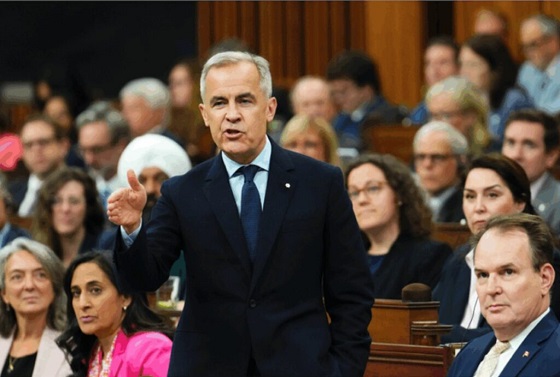Uncategorized
N. California fire officials begin agonizing search for dead

PARADISE, Calif. — Sheriff’s investigators have begun the agonizing task of scouring through the wreckage of California’s most destructive fire on record in search of the dead. By Saturday, the death toll had reached 23, but it seemed likely to climb.
With the entire town of Paradise wiped out and the fire still raging furiously in surrounding communities, Butte County Sheriff Kory Honea said the county was bringing in a fifth search and recovery team. An anthropology team from California State University, Chico was also assisting, because in some cases “the only remains we are able to find are bones or bone fragments.”
“This weighs heavy on all of us,” Honea said. “Myself and especially those staff members who are out there doing what is important work but certainly difficult work.”
The victims have not been identified, but the department has a roster of 110 people believed missing. Officials hope many of the elderly on the list simply are elsewhere without cellphones or away to contact loved ones. Honea said the agency was also bringing in a mobile DNA lab and encouraged people with missing relatives to submit samples to aid in the identification process.
The death toll made the Camp Fire the third-deadliest on record in the state, another statistic for a blaze now logged at 164 square miles (425 square
Entire
More firefighters headed to the area Saturday, with wind gusts of up to 50 miles per hour expected through Monday, raising the risk of conditions similar to those when the fire started Thursday, said Alex Hoon with the National Weather Service.
Two people were also found dead in a wildfire in Southern California , bringing the total number of fatalities statewide to 25 as the fires tore through Malibu mansions and working-class suburban homes. State officials put the total number of people forced from their homes statewide at more than 200,000. Evacuations included the city of Malibu, home to some of Hollywood’s biggest stars.
Back in Paradise, the air still clogged with smoke, residents who stayed behind to try to save their property or who managed to get back to their
People sidestepped metal that melted off cars and Jet-Skis and donned masks as they surveyed ravaged
Jan MacGregor, 81, got back to his small two-bedroom home in Paradise with the help of his firefighter grandson. He found his home
He has lived in Paradise for nearly 80 years, moving there in 1939 when he said the town had just 3,000 people and was nicknamed Poverty Ridge. The fire was not a complete surprise, he said.
“We knew Paradise was a prime target for forest fire over the years,” he said. “We’ve had ’em come right up to the city limits — oh yeah — but nothing like this,” he said.
MacGregor said he probably would not rebuild: “I have nothing here to go back to.”
Homes and other buildings in Paradise were still burning, and fire crews were trying to extinguish those blazes, said Scott McLean, a captain with the California Department of Forestry and Fire Protection. Officials warned firefighters to wear their helmets and be careful of falling trees.
Drought, warmer weather attributed to climate change and home construction deeper into forests have led to more destructive wildfire seasons that have been starting earlier and lasting longer.
California emerged from a five-year drought last year but has had a very dry 2018. Much of the northern two-thirds of the state, including where the fire is burning, is abnormally dry, according to a U.S. government analysis.
Elinor “Jeannie” Williams, 86, was not among the nine victims of the blaze but died as she waited to be airlifted from an evacuated hospital where she was being treated for a head injury.
She was dying, and the family expected to lose her in a few days, said her stepdaughter, Lisa. Still, her death has been hard on her 84-year-old father, Robert, who also may have lost his home, she said.
“He’s lost, he’s confused, he’s trying to hang in there,” she said. “It’s hitting him hard. Everything is gone, including his wife.”
___
Associated Press writers Daisy Nguyen, Olga R. Rodriguez and Sudhin Thanawala in San Francisco contributed to this report. Darlene Superville contributed from Paris.
Gillian Flaccus, Don Thompson And Paul Elias, The Associated Press
Uncategorized
Cost of bureaucracy balloons 80 per cent in 10 years: Public Accounts

The cost of the bureaucracy increased by $6 billion last year, according to newly released numbers in Public Accounts disclosures. The Canadian Taxpayers Federation is calling on Prime Minister Mark Carney to immediately shrink the bureaucracy.
“The Public Accounts show the cost of the federal bureaucracy is out of control,” said Franco Terrazzano, CTF Federal Director. “Tinkering around the edges won’t cut it, Carney needs to take urgent action to shrink the bloated federal bureaucracy.”
The federal bureaucracy cost taxpayers $71.4 billion in 2024-25, according to the Public Accounts. The cost of the federal bureaucracy increased by $6 billion, or more than nine per cent, over the last year.
The federal bureaucracy cost taxpayers $39.6 billion in 2015-16, according to the Public Accounts. That means the cost of the federal bureaucracy increased 80 per cent over the last 10 years. The government added 99,000 extra bureaucrats between 2015-16 and 2024-25.
Half of Canadians say federal services have gotten worse since 2016, despite the massive increase in the federal bureaucracy, according to a Leger poll.
Not only has the size of the bureaucracy increased, the cost of consultants, contractors and outsourcing has increased as well. The government spent $23.1 billion on “professional and special services” last year, according to the Public Accounts. That’s an 11 per cent increase over the previous year. The government’s spending on professional and special services more than doubled since 2015-16.
“Taxpayers should not be paying way more for in-house government bureaucrats and way more for outside help,” Terrazzano said. “Mere promises to find minor savings in the federal bureaucracy won’t fix Canada’s finances.
“Taxpayers need Carney to take urgent action and significantly cut the number of bureaucrats now.”
Table: Cost of bureaucracy and professional and special services, Public Accounts
| Year | Bureaucracy | Professional and special services |
|
$71,369,677,000 |
$23,145,218,000 |
|
|
$65,326,643,000 |
$20,771,477,000 |
|
|
$56,467,851,000 |
$18,591,373,000 |
|
|
$60,676,243,000 |
$17,511,078,000 |
|
|
$52,984,272,000 |
$14,720,455,000 |
|
|
$46,349,166,000 |
$13,334,341,000 |
|
|
$46,131,628,000 |
$12,940,395,000 |
|
|
$45,262,821,000 |
$12,950,619,000 |
|
|
$38,909,594,000 |
$11,910,257,000 |
|
|
$39,616,656,000 |
$11,082,974,000 |
Uncategorized
Trump Admin Establishing Council To Make Buildings Beautiful Again


From the Daily Caller News Foundation
By Jason Hopkins
The Trump administration is creating a first-of-its-kind task force aimed at ushering in a new “Golden Age” of beautiful infrastructure across the U.S.
The Department of Transportation (DOT) will announce the establishment of the Beautifying Transportation Infrastructure Council (BTIC) on Thursday, the Daily Caller News Foundation exclusively learned. The BTIC seeks to advise Transportation Secretary Sean Duffy on design and policy ideas for key infrastructure projects, including highways, bridges and transit hubs.
“What happened to our country’s proud tradition of building great, big, beautiful things?” Duffy said in a statement shared with the DCNF. “It’s time the design for America’s latest infrastructure projects reflects our nation’s strength, pride, and promise.”
“We’re engaging the best and brightest minds in architectural design and engineering to make beautiful structures that move you and bring about a new Golden Age of Transportation,” Duffy continued.
Mini scoop – here is the DOT’s rollout of its Beautifying Transportation Infrastructure Council, which will be tasked with making our buildings beautiful again. pic.twitter.com/
9iV2xSxdJM — Jason Hopkins (@jasonhopkinsdc) October 23, 2025
The DOT is encouraging nominations of the country’s best architects, urban planners, artists and others to serve on the council, according to the department. While ensuring that efficiency and safety remain a top priority, the BTIC will provide guidance on projects that “enhance” public areas and develop aesthetic performance metrics.
The new council aligns with an executive order signed by President Donald Trump in August 2025 regarding infrastructure. The “Making Federal Architecture Beautiful Again” order calls for federal public buildings in the country to “respect regional architectural heritage” and aims to prevent federal construction projects from using modernist and brutalist architecture styles, instead returning to a classical style.
“The Founders, in line with great societies before them, attached great importance to Federal civic architecture,” Trump’s order stated. “They wanted America’s public buildings to inspire the American people and encourage civic virtue.”
“President George Washington and Secretary of State Thomas Jefferson consciously modeled the most important buildings in Washington, D.C., on the classical architecture of ancient Athens and Rome,” the order continued. “Because of their proven ability to meet these requirements, classical and traditional architecture are preferred modes of architectural design.”
The DOT invested millions in major infrastructure projects since Trump’s return to the White House. Duffy announced in August a $43 million transformation initiative of the New York Penn Station in New York City and in September unveiledmajor progress in the rehabilitation and modernization of Washington Union Station in Washington, D.C.
The BTIC will comprise up to 11 members who will serve two-year terms, with the chance to be reappointed, according to the DOT. The task force will meet biannually. The deadline for nominations will end Nov. 21.
-

 Digital ID2 days ago
Digital ID2 days agoCanada releases new digital ID app for personal documents despite privacy concerns
-

 Energy2 days ago
Energy2 days agoCanada’s sudden rediscovery of energy ambition has been greeted with a familiar charge: hypocrisy
-

 Daily Caller21 hours ago
Daily Caller21 hours agoParis Climate Deal Now Decade-Old Disaster
-

 Business11 hours ago
Business11 hours agoOttawa Pretends To Pivot But Keeps Spending Like Trudeau
-

 armed forces1 day ago
armed forces1 day agoOttawa’s Newly Released Defence Plan Crosses a Dangerous Line
-

 Energy11 hours ago
Energy11 hours agoLiberals Twisted Themselves Into Pretzels Over Their Own Pipeline MOU
-

 Censorship Industrial Complex8 hours ago
Censorship Industrial Complex8 hours agoHow Wikipedia Got Captured: Leftist Editors & Foreign Influence On Internet’s Biggest Source of Info
-

 Bruce Dowbiggin2 days ago
Bruce Dowbiggin2 days agoNFL Ice Bowls Turn Down The Thermostat on Climate Change Hysteria










